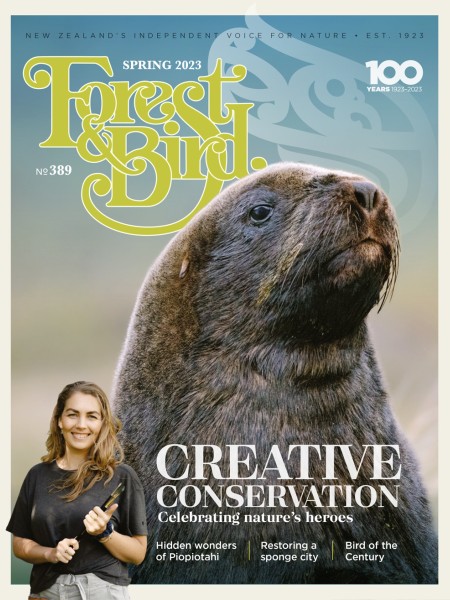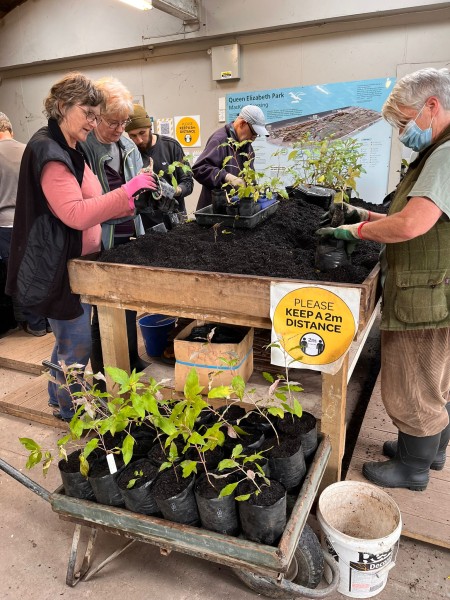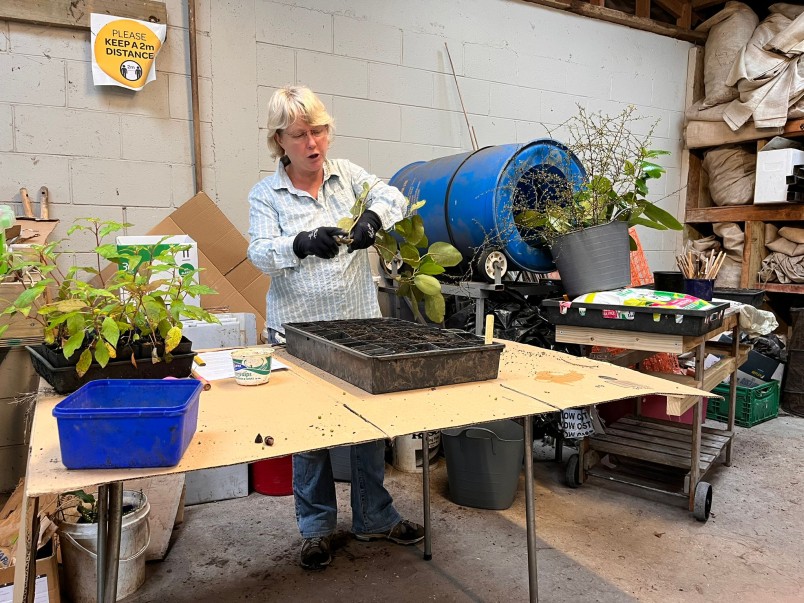Forest & Bird member Jill Visser set up a volunteer group to restore a former wetland on the Kāpiti Coast because she wanted to take hands-on action to help mitigate climate change.
Forest & Bird magazine
A version of this story was first published in the Spring 2023 issue of Forest & Bird magazine.

Growing up in Whanganui, I’ve always loved water – the ocean, the lakes, and of course the river. So many of my childhood memories involve being in, on, or near water. The feel and smell of it, the plants and creatures inhabiting it.
How wonderful then to learn the preservation and restoration of wetlands can provide solutions to two of the biggest challenges facing us – climate change and biodiversity loss.
As extreme weather events intensify across the globe, knowledge is spreading internationally about the vital role wetland areas can play in meeting those challenges, and the term “sponge cities” has, almost overnight, entered everyday speech.
In November 2021, UN Secretary General Antonio Guterres spoke through tears, saying “Our addiction to fossil fuels is pushing humanity to the brink.” It was one of those light bulb moments. I remember thinking world leaders aren’t going to do it. We have to do it ourselves.
Over the years, like many others, I’ve been doing all the green things I could to keep my carbon footprint down. But now I feel strongly that more is required, so I began my search for other ways to meaningfully contribute.
This raised some challenging questions. There are so many good initiatives out there – where should I focus my energy? Do I join an existing organisation? Get into lobbying and advocacy? What would give the biggest bang for my climate-mitigation buck? And perhaps most difficult of all, what do I actually have to offer?

Potting up in the Queen Elizabeth Park nursery. Image Jill Visser
Feeling completely overwhelmed, I decided to seek expert guidance and emailed climate scientist Professor James Renwick at Te Herenga Waka Victoria University. I put to him the question, “If you were a layperson wanting to take climate change action, what would you do?”
I explained that I felt drawn towards the restoration of native ecosystems, particularly wetlands, and asked whether that was a worthwhile endeavour given my goal. His answer couldn’t have been more generous or affirming.
In a nutshell, his response was anything that restores ecosystems and environments, and either increases absorption of greenhouse gases or reduces their emission to the atmosphere is a fantastic thing to be doing.
So with a big thumbs up from James and a few more enquiries, I was off, and one morning in March 2022 I found myself at the Greater Wellington Regional Council native plant nursery in Queen Elizabeth Park on the Kāpiti Coast.
It sits at the southern end of what was once a vast network of swamps and dunes, extending 65km northwards from Paekākāriki to the Manawatū River.

Pene Burton Bell. Image Jill Visser
Sadly, I’ve become increasingly familiar with statistics surrounding wetland loss, and Kāpiti’s Great Swamp has suffered the same fate as about 93% of Aotearoa New Zealand’s once abundant biodiverse wetlands – that of being drained and altered beyond recognition for human use.
The rate of loss in Aotearoa is well above the international average, with only tiny pockets now surviving, and despite RMA protection this loss is continuing, sometimes illegally.
In early 2022, two volunteer-led restoration groups operated out of the Greater Wellington Regional Council nursery at Queen Elizabeth Park.
I joined the Wednesday group led by Pene Burton Bell, chair of Forest & Bird’s Kāpiti-Mana Branch, who is extremely experienced and has been doing this valuable work for years.
Russell Bell has been a driving force there and is a prime mover in working with the council to retire areas of the park from grazing, making them available for rewetting and restoration.
At first I felt a bit whakamā about my lack of experience and decidedly limited botanical knowledge. But I do have good organisational skills (yes, I do have something to offer!) and, urged on by Russell’s advice (you don’t need to be an expert), I found that, once the goal was established, everything flowed from there.
Mira O’Connor is one of Jill’s volunteers. Image Kathy Ombler
Within a few months and supported by generous mentoring from those with more knowledge than I have, I established a sizable new group of excellent volunteers.
We meet monthly to restore a 7ha area within Queen Elizabeth Park known as Two Paddocks, and, although we have all sorts of different backgrounds and experience levels, we are all there for the common goal.
It can be hard work at times, but it’s interesting, fun, and absolutely rewarding. Despite the foraging skills of the many resident pūkeko, we are helping 900 or so plants from last season become established – including kahikatea, tī kōuka, coprosma, manuka, swamp maire, carex, and more – as well as preparing for the next planting season.
We attack the ever-present blackberry, and in the nursery we propagate seeds and pot up seedlings for the future. Within this beautiful environment and in good company, we’re learning about the various jobs required to get the right plants into the ground.
Over time, this will enable the return of plants, birds, insects, and fish to the area. I think we’ll need to change the name of Two Paddocks soon – it’s transforming before our eyes into the beginnings of a wetland ecosystem.
Spades of enthusiasm. Image Kathy Ombler
Taking Action
Jill Visser. Image Kathy Ombler
Before embarking on this wetland restoration, I felt hopeless in the face of the climate and biodiversity challenges confronting us all. But focusing on this long-term project, with its camaraderie and sense of common purpose, means those other feelings don’t get a look in as much as before.
Katherine, one of our volunteers, recently said, “It’s so satisfying. It might be a bit of an effort to get out there, but no matter what else I achieve in the week, I can say ‘I did that’.”
An excellent report commissioned by Forest & Bird, which featured in the Autumn 2023 magazine, shows a large number of historic wetlands on public land that could potentially be re-wetted and brought back to life.
Hence my purpose in writing this – to encourage anyone who may be asking that same question “What can I do?” into action. Of course, not everyone will arrive at the same answer, but I encourage you to do what you can.
To quote Antonio Guterres again, “Our world needs climate action on all fronts – everything, everywhere, all at once … we don’t have a moment to lose.”
This article is the first in a new series called Everyday conservation heroes. If you have a story to share, please contact editor@forestandbird.org.nz.
